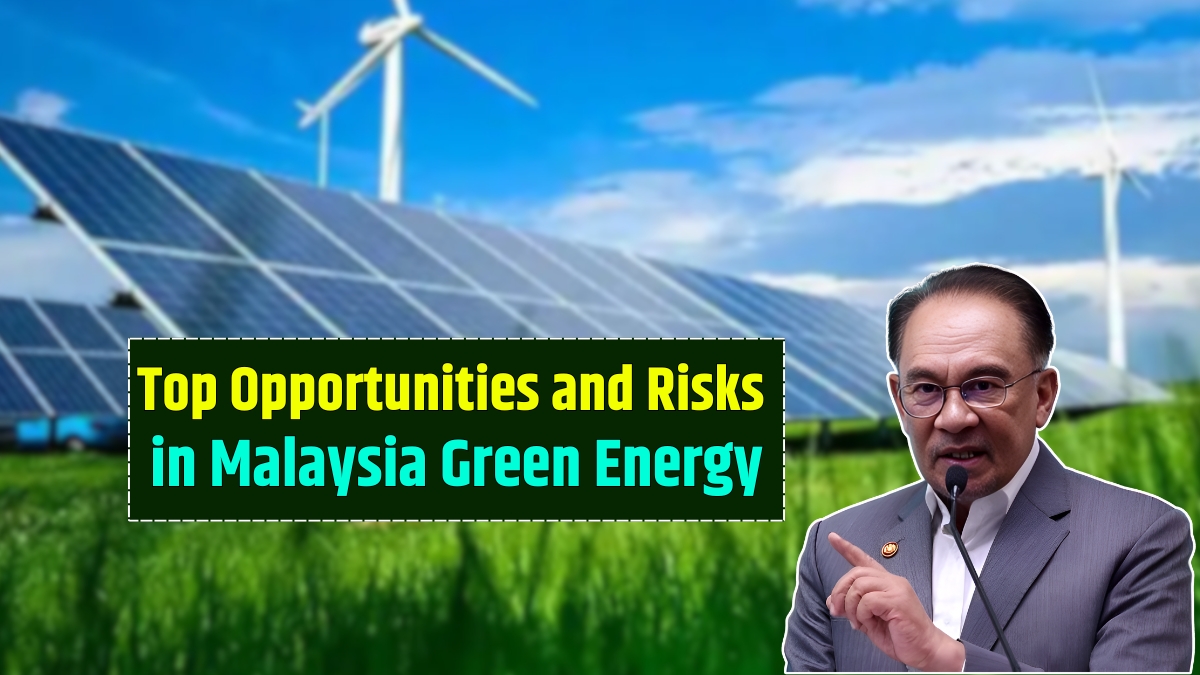Join on WhatsApp
Get the latest updates directly on WhatsApp – motivation, news & more!
Green energy has become a key focus for Malaysia as the country seeks to reduce reliance on fossil fuels and transition toward a more sustainable energy future. While there are significant opportunities for growth in renewable energy sectors, there are also notable challenges that must be addressed to ensure the successful development and integration of green technologies. This article explores the current landscape, potential benefits, and obstacles facing Malaysia’s green energy industry.
Current State of Green Energy in Malaysia
Malaysia has made notable strides in developing renewable energy sources such as solar, biomass, hydro, and wind energy. Solar power, in particular, has seen considerable growth due to the country’s tropical climate and abundant sunlight. Government initiatives and policies have encouraged investment in renewable energy, leading to the establishment of solar farms, small hydro projects, and biomass plants. Despite this progress, green energy still represents a relatively small portion of the country’s overall energy mix, with fossil fuels continuing to dominate electricity generation.
Promising Opportunities
The potential for green energy in Malaysia is substantial. Solar energy offers an immediate opportunity for expansion, particularly through rooftop solar panels for homes and commercial buildings. Biomass energy, derived from palm oil residues and other agricultural waste, provides an additional sustainable source of power. Hydropower and micro-hydro projects in rural areas can bring electricity to underserved communities while contributing to the national grid. These renewable options not only help reduce greenhouse gas emissions but also create new economic opportunities and jobs in manufacturing, installation, and maintenance of green technologies.
Government Policies Supporting Green Energy
The Malaysian government has implemented various policies to promote renewable energy, including the Feed-in Tariff (FiT) system, which allows renewable energy producers to sell electricity to the national grid at fixed rates. There are also tax incentives and grants designed to encourage businesses and individuals to adopt green technologies. The national energy policy emphasizes the diversification of energy sources and the reduction of carbon emissions, signaling long-term support for renewable energy development.
Key Challenges Facing Green Energy
Despite its potential, Malaysia’s green energy sector faces several challenges. One major issue is the heavy reliance on fossil fuels, particularly natural gas and coal, which remain cheaper and more readily available. The high initial cost of renewable energy projects, including solar and wind installations, can deter investors and slow adoption. In addition, the intermittent nature of solar and wind power requires effective storage solutions and grid management to maintain a stable energy supply. Regulatory hurdles, limited technical expertise, and a lack of public awareness about green energy also contribute to slower growth in the sector.
Infrastructure and Grid Integration
Effective integration of renewable energy into Malaysia’s national grid is critical for long-term success. Upgrading infrastructure to accommodate decentralized and intermittent energy sources requires substantial investment. Smart grid technologies, energy storage systems, and advanced monitoring are necessary to ensure reliability and efficiency. Addressing these technical challenges is crucial to avoid power shortages and maximize the benefits of renewable energy.
Economic and Environmental Benefits
Expanding green energy in Malaysia offers both economic and environmental advantages. It can reduce the country’s dependence on imported fossil fuels, improve energy security, and stabilize energy costs over time. Environmentally, renewable energy contributes to lower carbon emissions, reduced air pollution, and a healthier ecosystem. These benefits align with global sustainability goals and Malaysia’s commitments to international climate agreements.
Public Awareness and Education
For green energy to thrive, public support and awareness are essential. Educating communities about the benefits of renewable energy, energy efficiency, and sustainable practices can drive greater adoption at both residential and commercial levels. Outreach programs, incentives for solar panel installations, and collaborations with educational institutions can foster a culture that values and supports sustainable energy solutions.
Future Outlook
The future of green energy in Malaysia depends on balancing opportunities with challenges. Continued government support, technological innovation, and investment in infrastructure are crucial for scaling up renewable energy adoption. Collaboration between public and private sectors can accelerate growth while ensuring projects are economically viable and environmentally sustainable. Malaysia has the potential to become a regional leader in green energy if these factors are addressed effectively.
Conclusion
Green energy in Malaysia represents a promising path toward sustainability and energy security. While there are significant challenges, including high costs, fossil fuel dependency, and technical limitations, the potential benefits are equally substantial. By addressing these obstacles through policy support, infrastructure investment, and public engagement, Malaysia can harness its renewable resources effectively. The country’s commitment to expanding solar, biomass, hydro, and other green energy sources can lead to a cleaner, more resilient, and economically robust energy future.
With careful planning and strategic implementation, Malaysia’s green energy sector can grow from a promising idea into a vital component of the national energy landscape, benefiting both the environment and its citizens.




